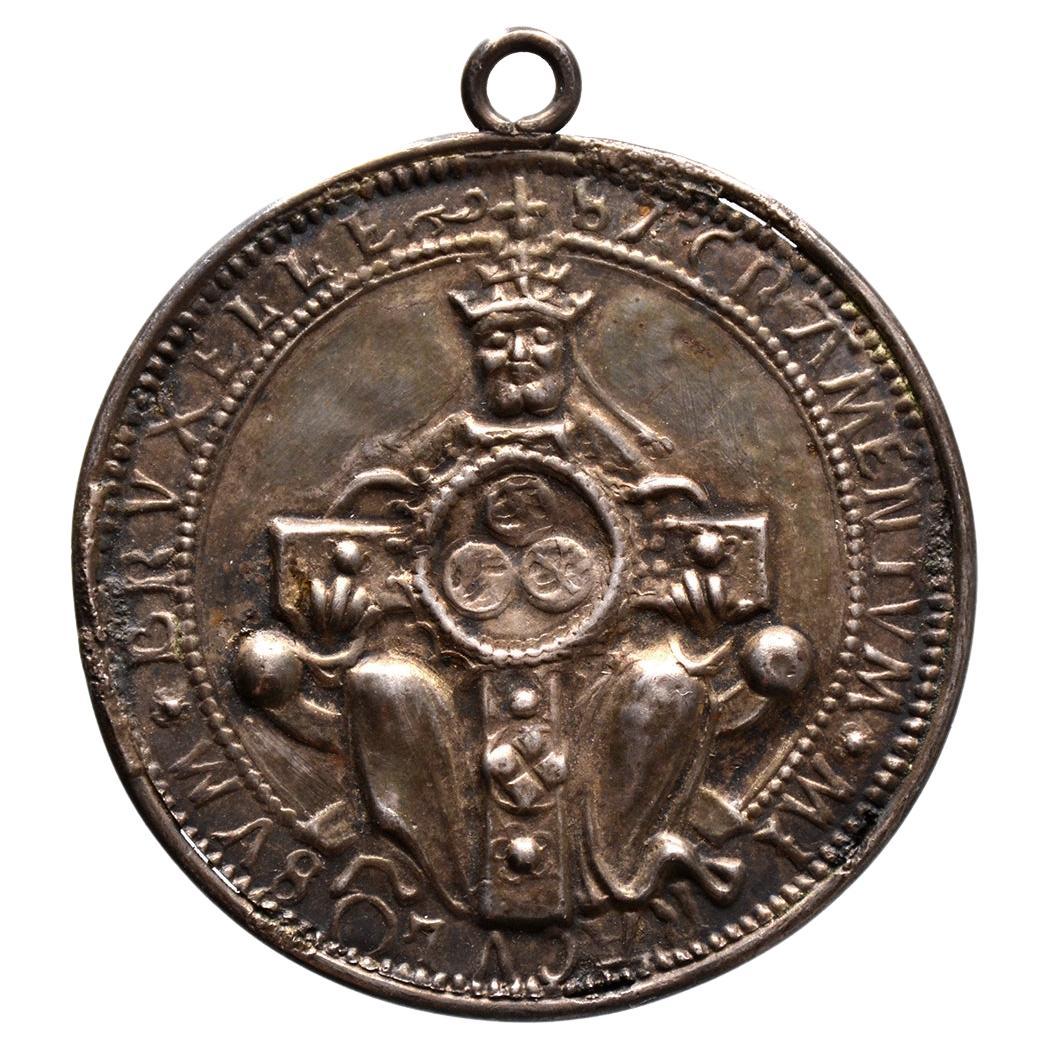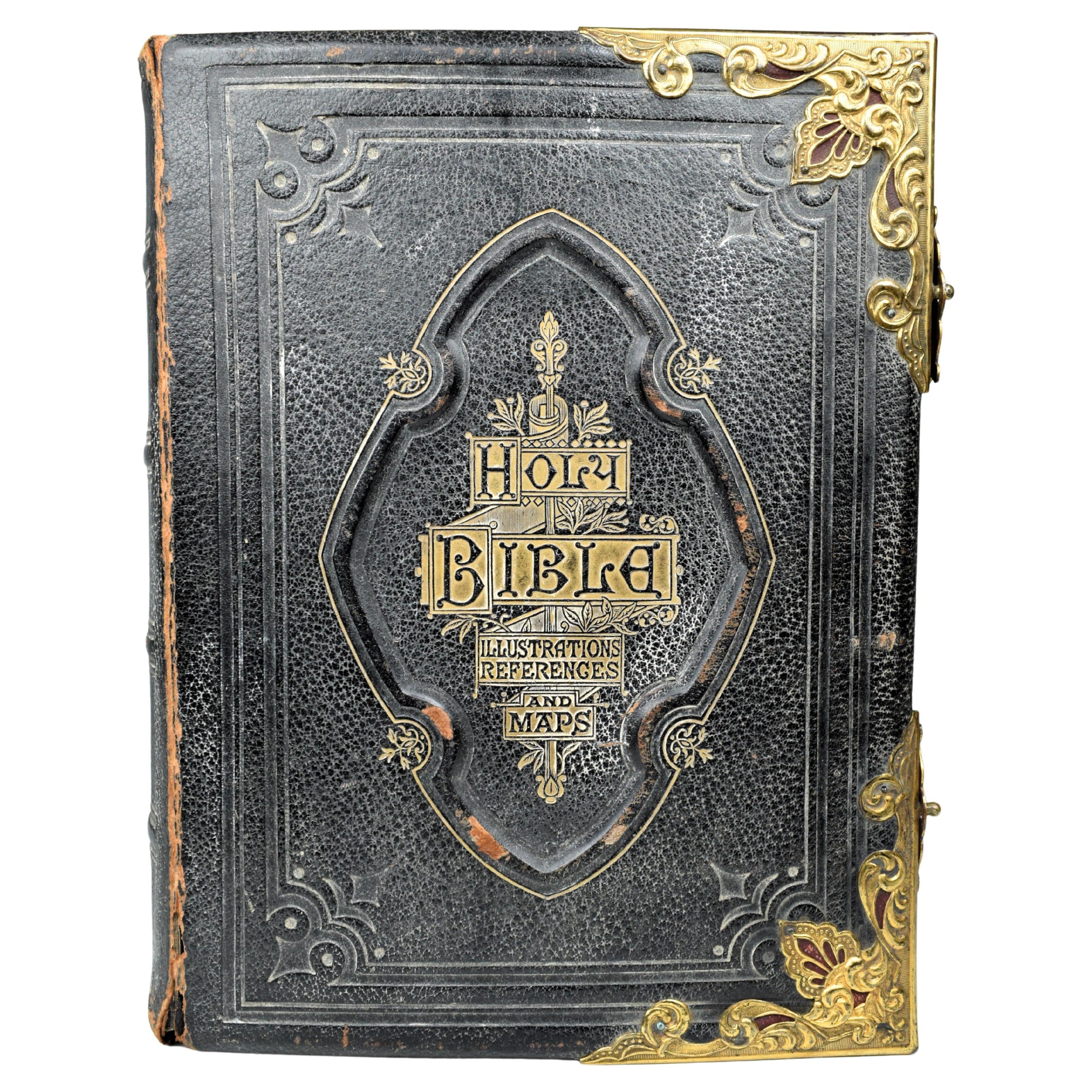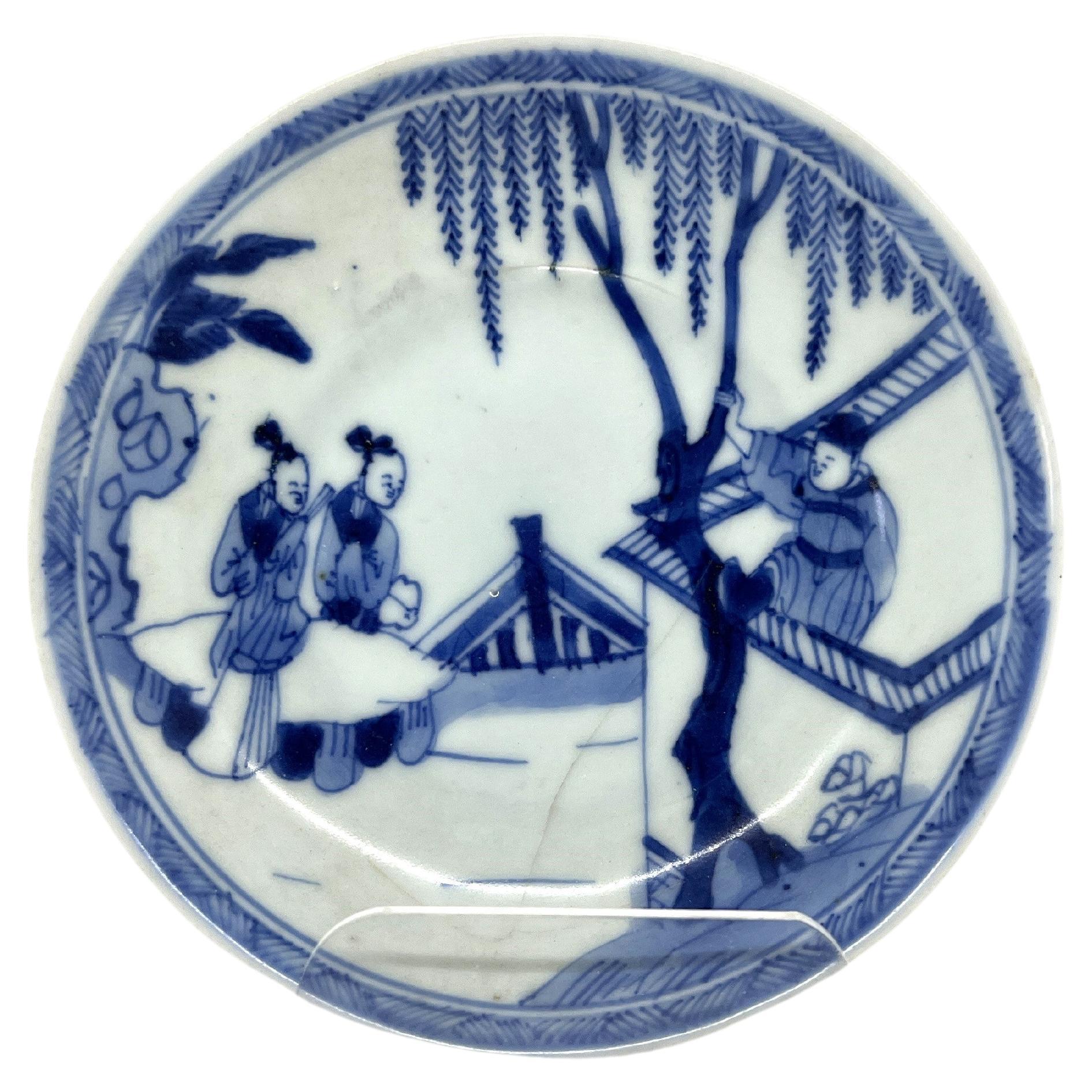Items Similar to Statuette of the Goddess Neith
Want more images or videos?
Request additional images or videos from the seller
1 of 12
Statuette of the Goddess Neith
About the Item
Bronze statue of the goddess Neith, striding, her left foot extended forward. Her left hand is extended forward and formally held a papyrus sceptre, a fragmentary ankh is visible in her right hand. She wears a close-fitting sheath dress, incised with a broad usekh collar, and carefully engraved bracelets and armlets. On her head is the Red Crown of Lower Egypt, decorated with vertical striations and restored spiral and spire. Her face is finely molded, with a broad upturned nose and electrum-overlaid eyes and eyebrows.
Neith was one of the earliest recorded gods in the Egyptian pantheon, worshipped from early in the Predynastic era through to the arrival of Roman rule. A war goddess and goddess of weaving, she was the patron goddess of the Red Crown of Lower Egypt and the city of Zau (Sais, in the 5th Nome of Lower Egypt) in the Delta. A powerful and popular goddess, she was, according to the Iunyt (Esna) cosmology, the creator of the world and the mother of the sun, Ra. This made her the mother of all of the gods, who often came to her to settle their disputes.
Her symbols are the bow and arrows and a sword and shield as a war goddess, a weaving shuttle as a funerary goddess, and the Red Crown of Lower Egypt as the goddess of creation and mother goddess. She is usually depicted as a woman wearing the Red Crown of Lower Egypt, however, she is occasionally depicted as a cow in connection with her role as the mother of Ra.
The use of electrum, a naturally occurring alloy of gold and silver sometimes called ‘green-gold’, for the eyes speaks to the high status of the object. Electrum had been used by the Egyptians since at least the 3rd millennium B.C., but, give its rarity, was reserved for the most expensive and important objects. Most electrum used in Egypt was imported from Nubia, though some was found there.
Published:
Parke-Bernet Galleries, New York, February 25th, 1971, no. 70, illus.
Sotheby’s, New York, June 5th, 1999, no. 31, illus.
David Aaron Ltd, 2023, No. 28.
Provenance:
Previously in the Private Collection of Albert Roothbert (1874-1965) and Toni von Horn (1899-1970) New York and Ridgefield, Connecticut, from at least 1928 (accompanied by a photograph of the bronze by photographer Arnold Genthe, dated 1928).
Topstone Fund, New York (a foundation set up by Roothbert and von Horn, named after their farm on Topstone Road, Connecticut). Bequeathed on von Horn’s death in 1970.
Sold: Parke-Bernet Galleries, New York, February 25th, 1971, no. 70.
With Allan Caplan Trust, New York, acquired at the above sale.
Sold: Sotheby’s, New York, June 5th, 1999, no. 31
Private Collection, acquired at the above sale.
ALR: S00224371, with IADAA Certificate, this item has been checked against the Interpol database.
- Dimensions:Height: 13 in (33 cm)Width: 3.94 in (10 cm)Depth: 3.15 in (8 cm)
- Style:Egyptian (Of the Period)
- Materials and Techniques:
- Place of Origin:
- Period:
- Date of Manufacture:26th Dynasty, 6th to 5th Century B.C
- Condition:Wear consistent with age and use.
- Seller Location:London, GB
- Reference Number:
About the Seller
5.0
Vetted Seller
These experienced sellers undergo a comprehensive evaluation by our team of in-house experts.
Established in 1910
1stDibs seller since 2020
- ShippingRetrieving quote...Ships From: London, United Kingdom
- Return PolicyThis item cannot be returned.
More From This SellerView All
- Ushabti for ImenmesLocated in London, GBA mummiform ushabti in blue faience. Four registers of hieroglyphic characters are painted around the lower half of the ushabti, with a vertical column of hieroglyphs in the centre o...Category
Antique 15th Century and Earlier Egyptian Egyptian Antiquities
MaterialsFaience
- South Arabian Head of a WomanLocated in London, GBA female head finely carved from evenly-coloured cream alabaster. The face features a strong chin, high rounded cheekbones, and large elliptical eyes deeply inset for inlays. The remains of the nose indicate that it was long, thin, and roughly triangular in form. A small, round mouth sits just below the nose. Deeply incised eyebrows follow the shape of the eyes, which are framed by unusual grooved canthi on either side, possibly to represent cosmetic eye paint. The supraorbital margins above the eyes are deeply carved, while the carving below the eyes is more subtle, smoothing the sockets into the rounded cheeks. The ears are formed from two arcs and a central sphere, and both lobes are pierced for earrings. The long hair frames the face below the ears, and is carved to create a rougher texture. There is a stock sticker on the back of the neck. A fragment of the right shoulder remains. This suggests that the head was part of a larger sculpture, possibly a full figure (though this seems unlikely due to its relatively large scale) or, more likely, a bust. This head is stylistically aligned with those found at Timna, the capital of the ancient Yemeni kingdom of Qataban, which existed from the 1st millennium BC until the late 1st or 2nd centuries AD. Timna served as an important hub of the Incense Route, the camel caravan that transported incense from Arabia and India to ports on the Mediterranean Sea. Roman author and philosopher Pliny the Elder (23/24-79 AD) described Timna as a busy city with around 65 temples. Excavations in 1950 and 1951 by Wendell Phillips...Category
Antique 15th Century and Earlier European Antiquities
MaterialsAlabaster
- Anglo-Saxon Hanging BowlLocated in London, GBA very rare and near-complete copper-alloy hanging bowl and associated fittings. Crafted from a single sheet of bronze, the body of the bowl is curved, with a slightly recessed lip. ...Category
Antique 15th Century and Earlier English Antiquities
MaterialsBronze
- Bronze HoardLocated in London, GBDagger L: 27.8 cm, Luniform bronze, possibly a belt buckle L: 10.8 cm, Shield-shaped bronze with a point Diam: 6.5 cm, Pommel Diam: 3.7 cm, Violin-bow brooch L: 17.5 cm, P-Shape...Category
Antique 15th Century and Earlier European Classical Roman Antiquities
MaterialsBronze
- Megalithic StelaLocated in London, GBA tall anthropomorphic stele of carved granite, divided into two distinct regions of the body and face. The body is a single unarticulated block, but the facial features are outlined...Category
Antique 15th Century and Earlier European Antiquities
MaterialsGranite
- Bronze SirenLocated in London, GBSirens were dangerous bird-like females who tempted sailors with their hauntingly beautiful song. In Homer’s Odyssey (XII, 39) Odysseus and his sailors were warned about the lethal c...Category
Antique 15th Century and Earlier Greek Classical Greek Antiquities
MaterialsBronze
You May Also Like
- A Rare and Finely Detailed Greek Bronze Statuette of an Actor with Large PhallusLocated in London, GBA Rare and Finely Detailed Greek Bronze Statuette of an Actor with Large Phallus Bronze Greek First half of 4th Century BC Size: 10.5cm high - 4¼ ins high Provenance: Ex Privat...Category
Antique 15th Century and Earlier Greek Antiquities
MaterialsBronze
- Southern Netherlands. Medal of the Holy Sacrament of the Miracle of BrusselsLocated in UTRECHT, UTObverse: SACRAMENTVM . MI – RACVLOSVM . BRVXELLE, cross with the Holy Hosts, carried by God the Father Reverse: dito VERY RARE, only 2 known specimens (1 in the KBR in Brussels and ...Category
Antique 17th Century Belgian Classical Roman Antiquities
MaterialsSilver
- The Holy Bible With An Abridgement Of The Commentaries Of Scott And HenryLocated in Islamabad, PKThe Holy Bible With An Abridgement Of The Commentaries Of Scott And Henry Bound in full navy Morocco with the covers displaying open-tooled bordering details, an indented central ti...Category
Antique 19th Century British Victorian Antiquities
MaterialsGold Plate
- Turn of the Century Metal BowlerLocated in Riverdale, NYTurn of the Century Metal Bowler of molded sheet metal, possibly a salesmans sample or display item. 1930s. Marked ELTON. 10.5" x 9" x 4.Category
Vintage 1930s American Art Deco Antiquities
MaterialsMetal
- Leaded-Glass Window Picturing The Queen of the East, ca. 1899Located in Langweer, NLOriginal Antique Leaded-glass window depicting "Batavia, Queen of the East' & the Coat of Arms of Batavia, in wooden door, execution Atelier van Gebrand Glas 't Prinsenhof - Jan Scho...Category
Antique 1890s European Art Nouveau Antiquities
MaterialsLead
- The Romance of the Western Chamber Saucer, Qing Dynasty, Yongzheng Era c 1725Located in seoul, KRThe scene depicted in the porcelain is inspired by "The Romance of the Western Chamber" (西厢记), which is one of the most famous Chinese classical novels and was among the first to be ...Category
Antique 1720s Chinese Qing Antiquities
MaterialsCeramic





